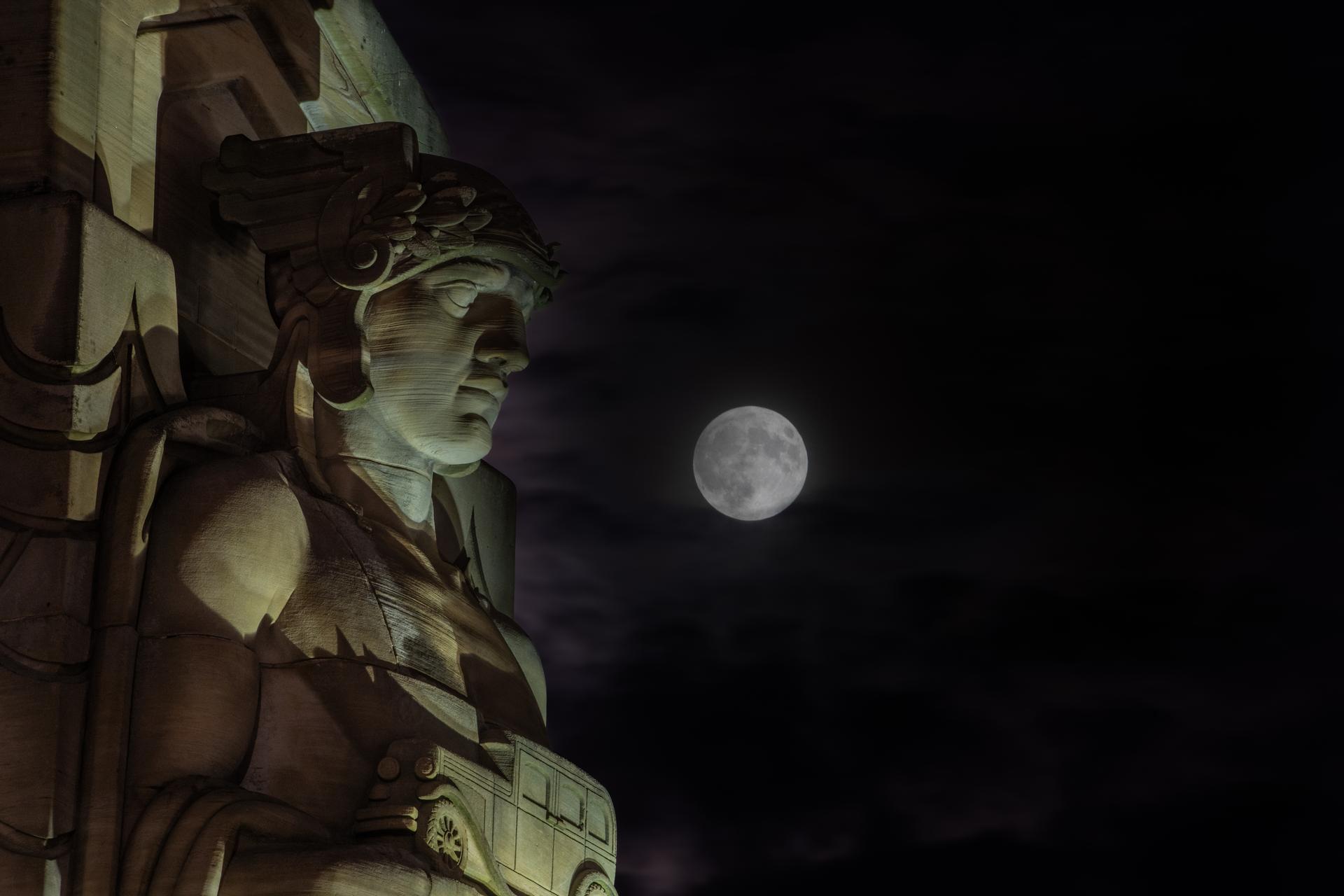4 min read
http://uanews.opi.arizona.edu/cgi-bin/WebObjects/UANews.woa/wa/SRStoryDetails?ArticleID=3561
University of Arizona News Services
The idea that what humans witnessed and chronicled in 1178 A.D. was a major meteor impact that created the 22-kilometer (14-mile) lunar crater called Giordano Bruno is myth, a University of Arizona graduate student has discovered.
And this should be welcome news for those worried by Deep Impact movie scenarios.
The idea that 12th century people saw the impact that created a lunar crater more than 10 times as wide as Meteor Crater in northern Arizona has been popular since it was first proposed 25 years ago. But it doesn't hold up under scientific scrutiny, said Paul Withers of the UA Lunar and Planetary Laboratory.
Such an impact would have resulted in a blinding, blizzard-like, week-long meteor storm on Earth - yet there are no such accounts in any known historical record, including the European, Chinese, Arabic, Japanese and Korean astronomical archives, Withers said. He reports the analysis and other tests of the hypothesis in this month's issue of Meteoritics and Planetary Science.
The dramatic passage in question appears in the medieval chronicles of Gervase of Canterbury.
About an hour after sunset June 18, 1178 A.D., a band of five eyewitnesses watched as the upper horn of the bright, new crescent moon "suddenly split in two. From the midpoint of this division a flaming torch sprang up, spewing out . . . fire, hot coals and sparks. . .The body of the moon , which was below writhed. . .throbbed like a wounded snake." The phenomenon recurred another dozen times or more, the witnesses reported.
A geologist suggested in 1976 that this account is consistent with the location and age of Giordano Bruno, the youngest crater of its size or larger on the moon.
A one-to-three kilometer wide (a half-mile to almost 5-mile wide) meteor blasted Giordano Bruno into the northeast limb of the moon. Such an impact on the Earth would be "civilization threatening," causing regional devastation to global climatic catastrophe - so it is important to know if such an event happened on the moon less than a millennium ago, Withers noted.
The impact would have launched 10 million tons of ejecta into the Earth's atmosphere in the following week, previous studies have shown, Withers said. In the Meteoritics article, Withers reports his calculations on the properties of the subsequent meteor storm.
"I calculate that this would cause a week-long meteor storm potentially comparable to the peak of the 1966 Leonids storm." Ten million tons of rock showering the entire Earth as pieces of ejecta about a centimeter across (inch-sized fragments) for a week is equivalent to 50,000 meteors an hour.
"And they would be very bright, very easy to see, at magnitude 1 or magnitude 2. It would have been a spectacular sight to see! Everyone around the world would have had the opportunity to see the best fireworks show in history, " Withers said.
Yet no vigilant 12th century sky watcher reported such a storm.
So what did the witnessess see that the Canterbury monk recorded?
"I think they happened to be at the right place at the right time to look up in the sky and see a meteor that was directly in front of the moon, coming straight towards them," Withers said. This idea was strongly suggested by others in a 1977 scientific paper.
"And it was a pretty spectacular meteor that burst into flames in the Earth's atmosphere- fizzling, bubbling, and spluttering. If you were in the right one-to-two kilometer patch on Earth's surface, you'd get the perfect geometry," he said. "That would explain why only five people are recorded to have seen it.
"Imagine being in Canterbury on that June evening and seeing the moon convulse and spray hot, molten rock into space, " Withers added. "The memories of it would live with you for the rest of your life."
Contact:
Paul Withers, UA planetary sciences
520-621-1507, withers@lpl.arizona.edu







